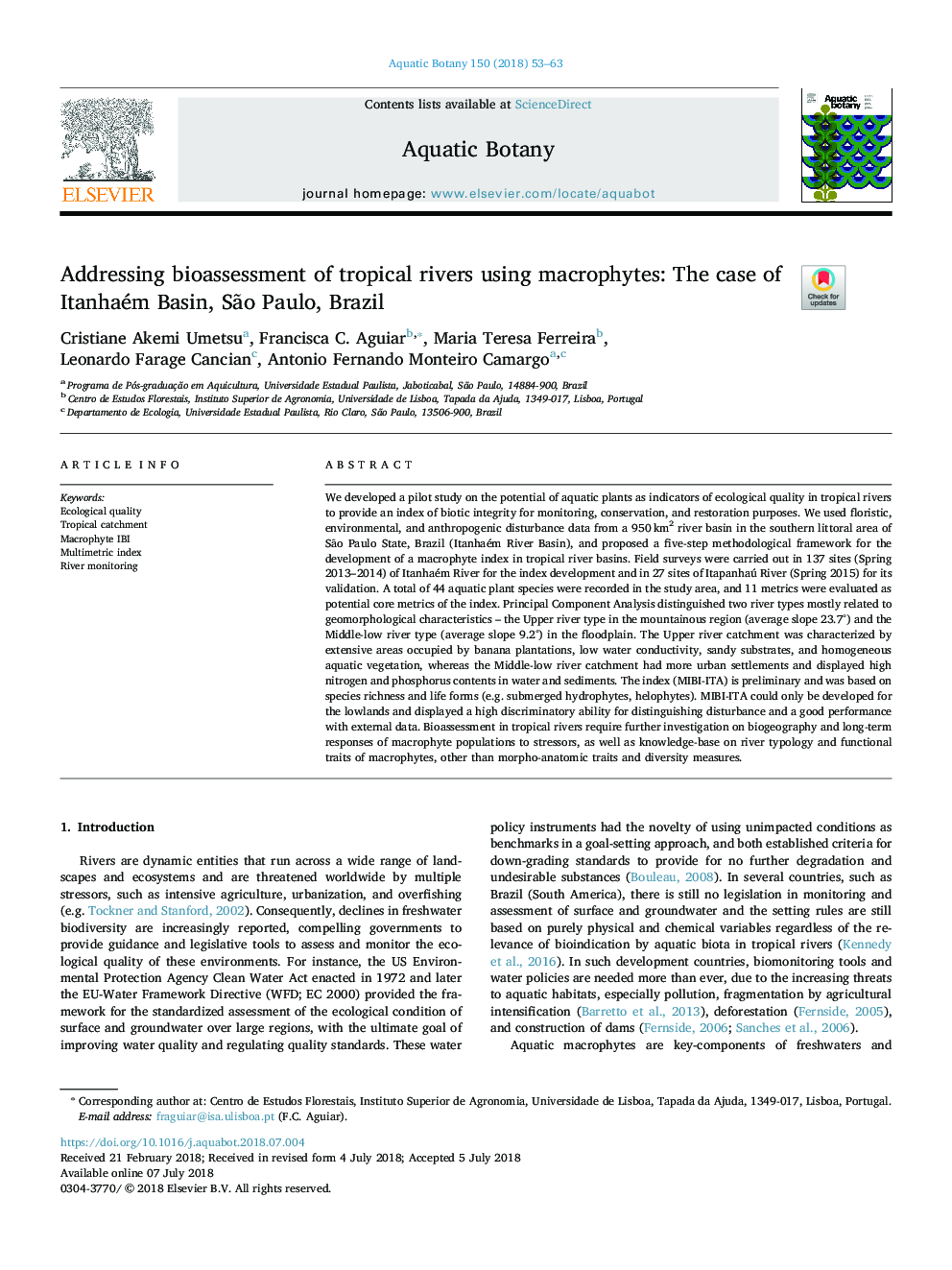| Article ID | Journal | Published Year | Pages | File Type |
|---|---|---|---|---|
| 8883546 | Aquatic Botany | 2018 | 11 Pages |
Abstract
We developed a pilot study on the potential of aquatic plants as indicators of ecological quality in tropical rivers to provide an index of biotic integrity for monitoring, conservation, and restoration purposes. We used floristic, environmental, and anthropogenic disturbance data from a 950â¯km2 river basin in the southern littoral area of São Paulo State, Brazil (Itanhaém River Basin), and proposed a five-step methodological framework for the development of a macrophyte index in tropical river basins. Field surveys were carried out in 137 sites (Spring 2013-2014) of Itanhaém River for the index development and in 27 sites of Itapanhaú River (Spring 2015) for its validation. A total of 44 aquatic plant species were recorded in the study area, and 11 metrics were evaluated as potential core metrics of the index. Principal Component Analysis distinguished two river types mostly related to geomorphological characteristics - the Upper river type in the mountainous region (average slope 23.7°) and the Middle-low river type (average slope 9.2°) in the floodplain. The Upper river catchment was characterized by extensive areas occupied by banana plantations, low water conductivity, sandy substrates, and homogeneous aquatic vegetation, whereas the Middle-low river catchment had more urban settlements and displayed high nitrogen and phosphorus contents in water and sediments. The index (MIBI-ITA) is preliminary and was based on species richness and life forms (e.g. submerged hydrophytes, helophytes). MIBI-ITA could only be developed for the lowlands and displayed a high discriminatory ability for distinguishing disturbance and a good performance with external data. Bioassessment in tropical rivers require further investigation on biogeography and long-term responses of macrophyte populations to stressors, as well as knowledge-base on river typology and functional traits of macrophytes, other than morpho-anatomic traits and diversity measures.
Related Topics
Life Sciences
Agricultural and Biological Sciences
Aquatic Science
Authors
Cristiane Akemi Umetsu, Francisca C. Aguiar, Maria Teresa Ferreira, Leonardo Farage Cancian, Antonio Fernando Monteiro Camargo,
